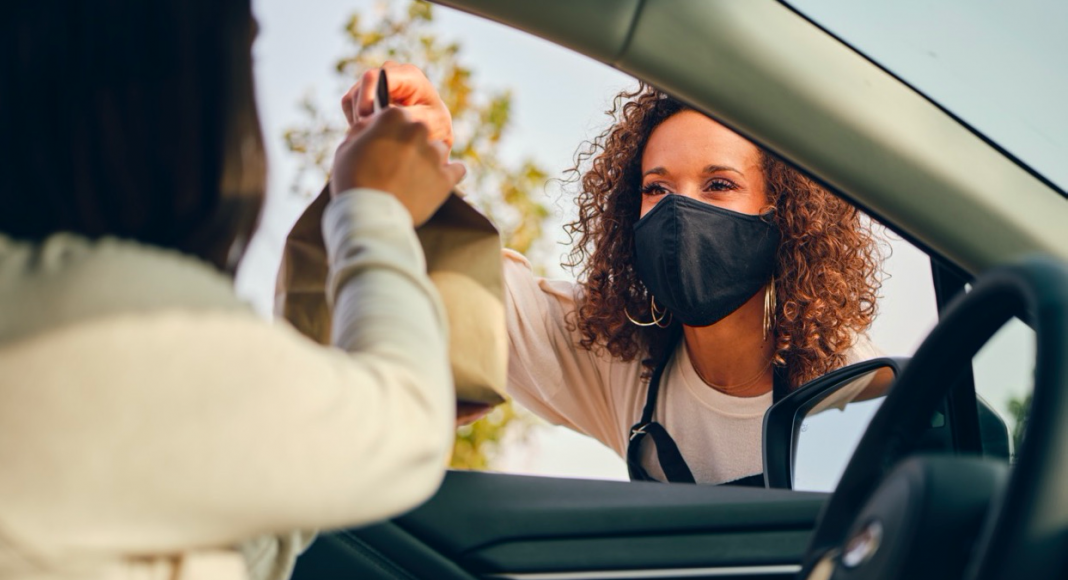Seventy percent of Americans know someone who tested positive; one in five know someone who died from coronavirus, survey shows.
For most of 2020, we followed the same representative sample of Americans in a series of surveys to study how they were dealing with the Covid-19 pandemic and whether their reactions, views, and beliefs changed over the course of the largest public health and economic crisis in modern US history.
Our findings highlight how the coronavirus has exacerbated existing income, gender, and race inequalities, and affected Americans’ trust in institutions, further increasing political divisions. We conducted this longitudinal survey as part of a joint partnership between the Poverty Lab, the Rustandy Center for Social Sector Innovation and NORC at the University of Chicago, an independent, non-partisan research institution.
Below we provide a snapshot of findings from waves one through seven (conducted from April through October 2020). You can read the full report of our findings here.
Sixty percent of Americans earning below $30,000 annually pre-Covid lost income. Low-income households also lost a higher fraction of their income and were less likely to recover income, compared with higher-income households.
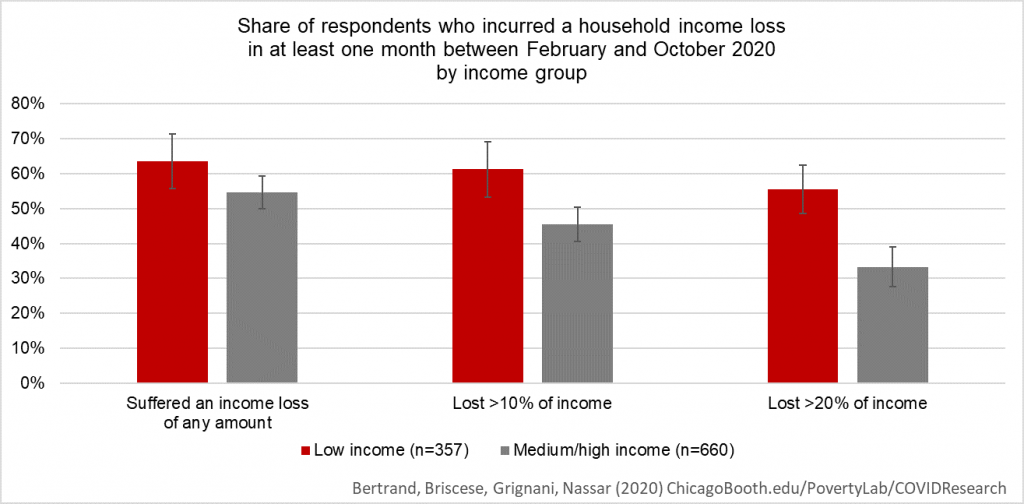
Among low-income households, 17 percent have missed a rent or mortgage payment and over a quarter have missed a credit card or a loan payment since the start of the pandemic. Across income groups, about 15 percent of the families withdrew from their retirement savings, and a smaller but significant portion of families have taken payday loans (about 9 percent and 4 percent), short-term unsecured cash advances often with high interest rates.
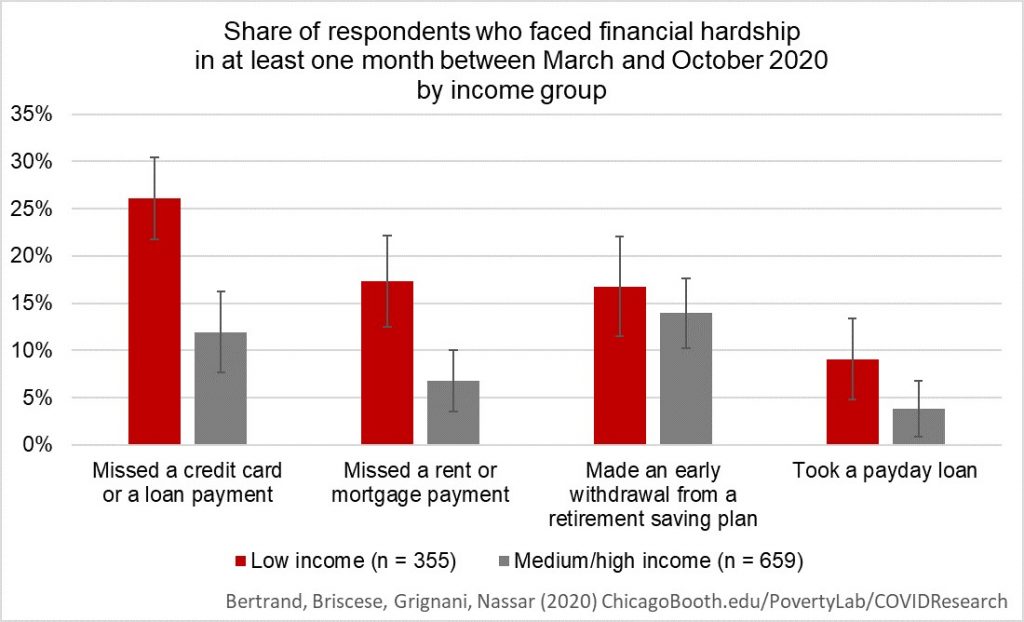
Democrats and Republicans report different levels of trust across institutions, although they both report extremely low levels of confidence, less than 10 percent, in the US Congress. Americans’ trust in institutions has decreased throughout the pandemic, with Republicans experiencing the largest decrease in trust in people in the scientific community and banks and financial institutions, while Democrats reported their largest drops in trust for the US Congress, the private sector, and health insurance companies.
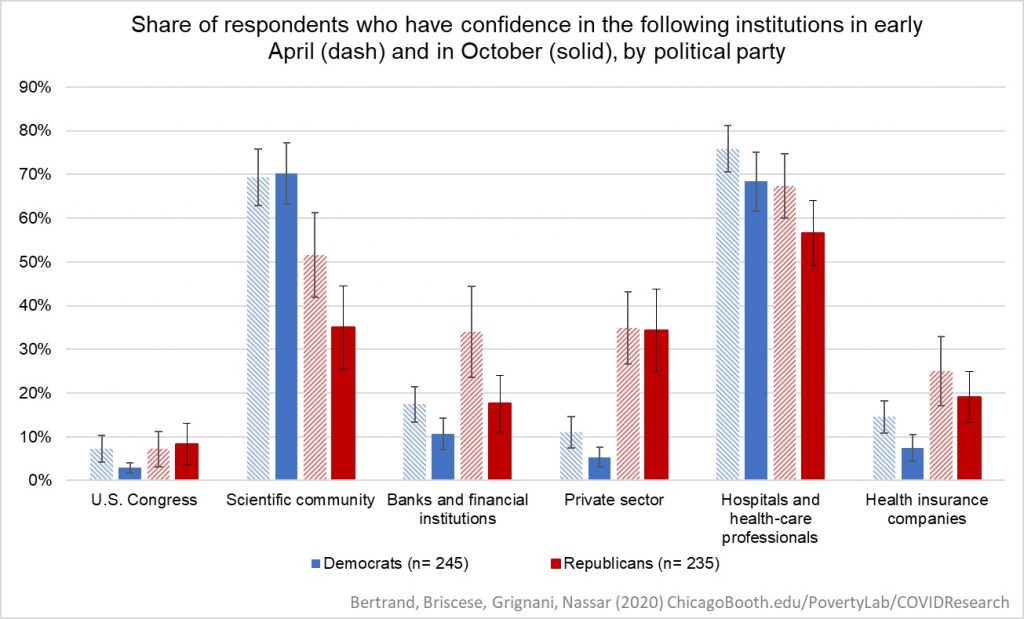
Since April, fewer individuals believe that it is the government’s responsibility to support the unemployed, with Republicans reporting the largest drop.
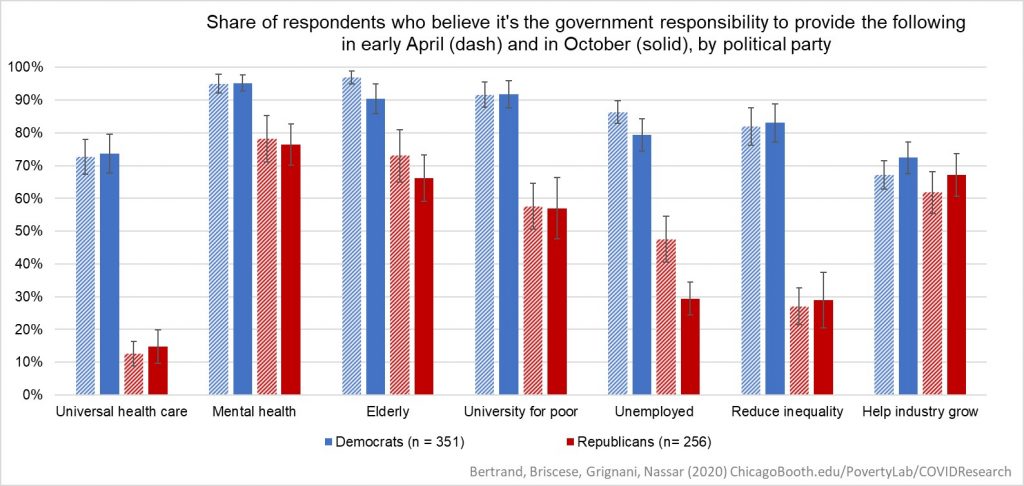
Americans have been exposed to Covid-19 in similar ways, regardless of their income, state, or political party. By October, about 70 percent of Americans reported knowing someone who has tested positive and about one in five Americans knew someone who passed away due to coronavirus.
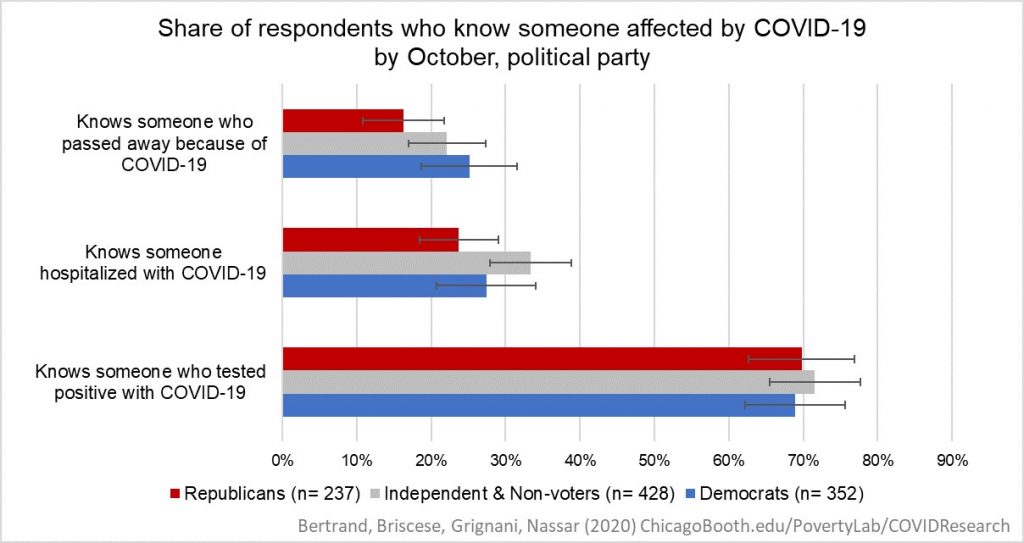
Over 85 percent of Americans reported wearing a mouth covering in public in October, with Republicans increasing their likelihood from 35 percent in April to over 80 percent in October.
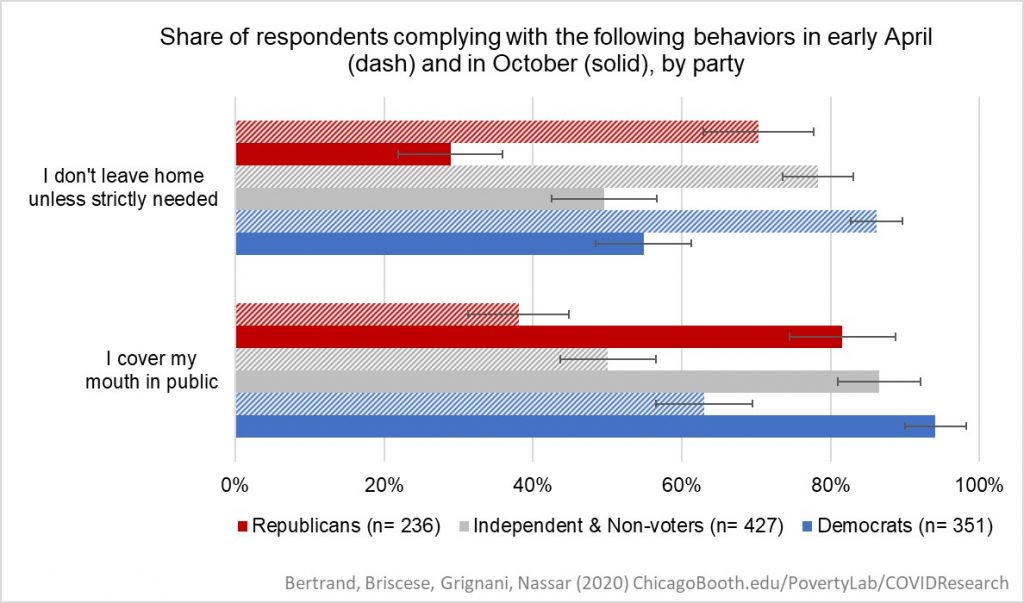
This research project consists of a total of seven survey waves beginning in April 2020 and ending in October 2020. You’ll find the latest at ChicagoBooth.edu/PovertyLab/COVIDresearch.
Editor’s Note: The survey was administered using a sample drawn from NORC’s probability-based AmeriSpeak Panel, which is designed to be representative of the US population.





